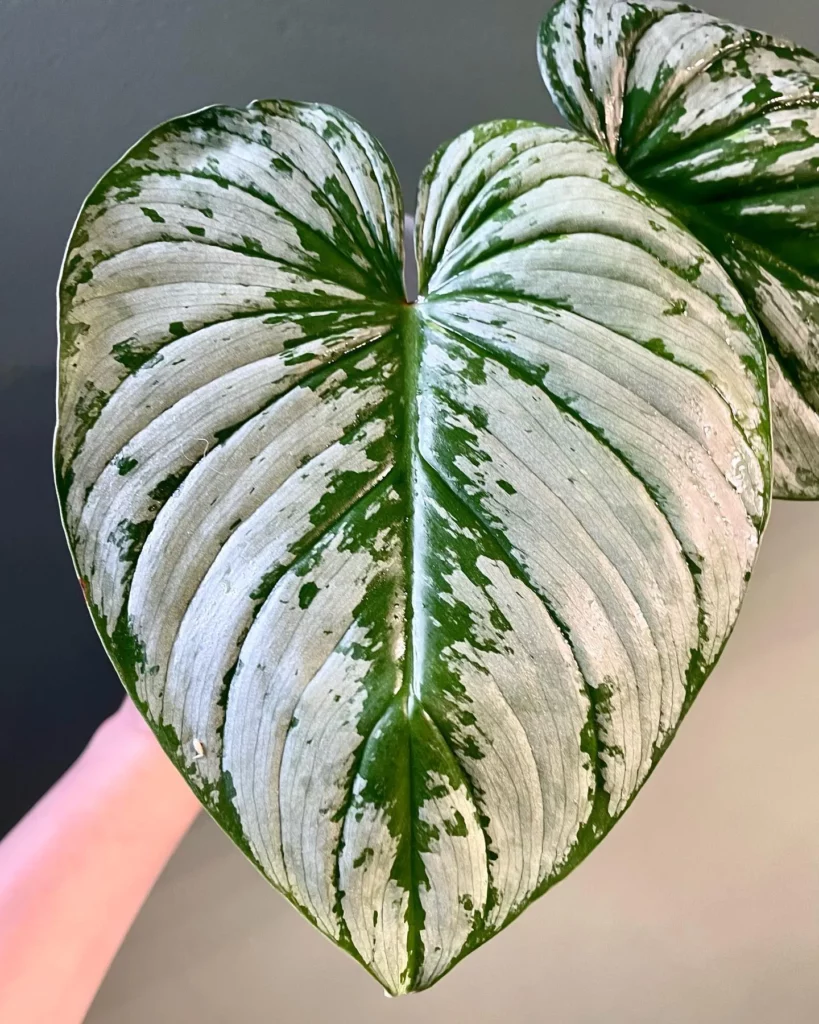Welcome to our guide on growing Philodendron Billietiae, a tropical plant renowned for its enormous heart-shaped leaves and ease of care. Whether you’re a seasoned plant enthusiast or a beginner, we’ve got you covered with essential care tips to help your Philodendron Billietiae thrive.
Native to Guyana, Brazil, and French Guiana, Philodendron Billietiae was first discovered in 1981. As a houseplant, it reaches a height of about three feet and boasts wavy leaves with yellow-orange petioles.
Key Takeaways:
- Provide bright but indirect light to your Philodendron Billietiae.
- Maintain temperatures between 65 and 80 degrees Fahrenheit.
- Ensure high humidity for optimal growth.
- Use well-draining soil with perlite and compost.
- Regularly prune your Philodendron Billietiae to remove dead leaves and shape the plant.
Appearance of Philodendron Billietiae: A Standout Plant
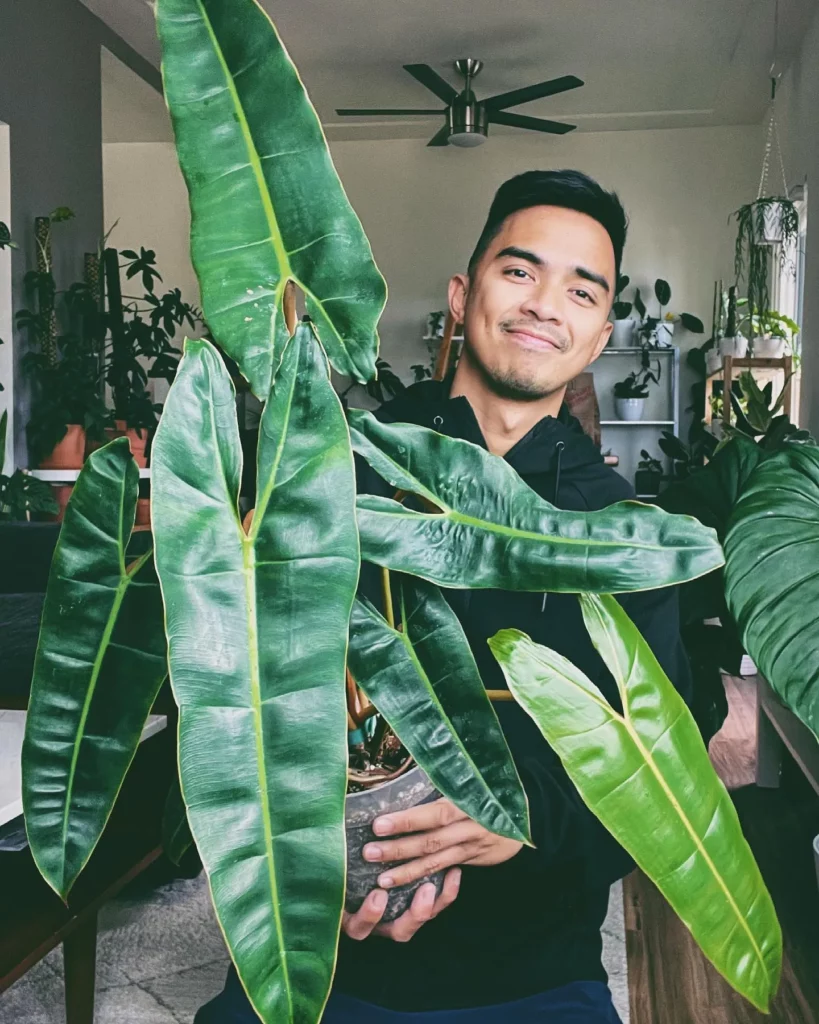


One of the standout features of Philodendron billietiae is its unique appearance. This tropical plant is known for its enormous heart-shaped leaves with wavy edges and vibrant yellow-orange petioles.
The leaves can grow up to three feet long in the wild, creating a striking visual display. Even when grown in pots, the Philodendron billietiae still maintains its impressive size, reaching a maximum height of three feet. The deep green color of the leaves, combined with the light green veins, forms a captivating contrast that immediately draws attention.
The texture of the leaves is another distinguishing characteristic of the Philodendron billietiae. They feel velvety to the touch due to the presence of tiny hairs called trichomes. These trichomes contribute to the plant’s overall aesthetic appeal and add a delightful tactile experience when interacting with the leaves. However, it’s important to handle the plant with care to avoid damaging these delicate trichomes and preserve the beauty of the Philodendron billietiae.
The standout appearance of the Philodendron billietiae makes it an excellent choice for adding a touch of tropical elegance to any indoor space. Whether you place it in a living room, office, or even a bathroom, this plant is sure to become a focal point and a conversation starter.
No products found.
How To Grow Philodendron Billietiae: Essential Care Tips
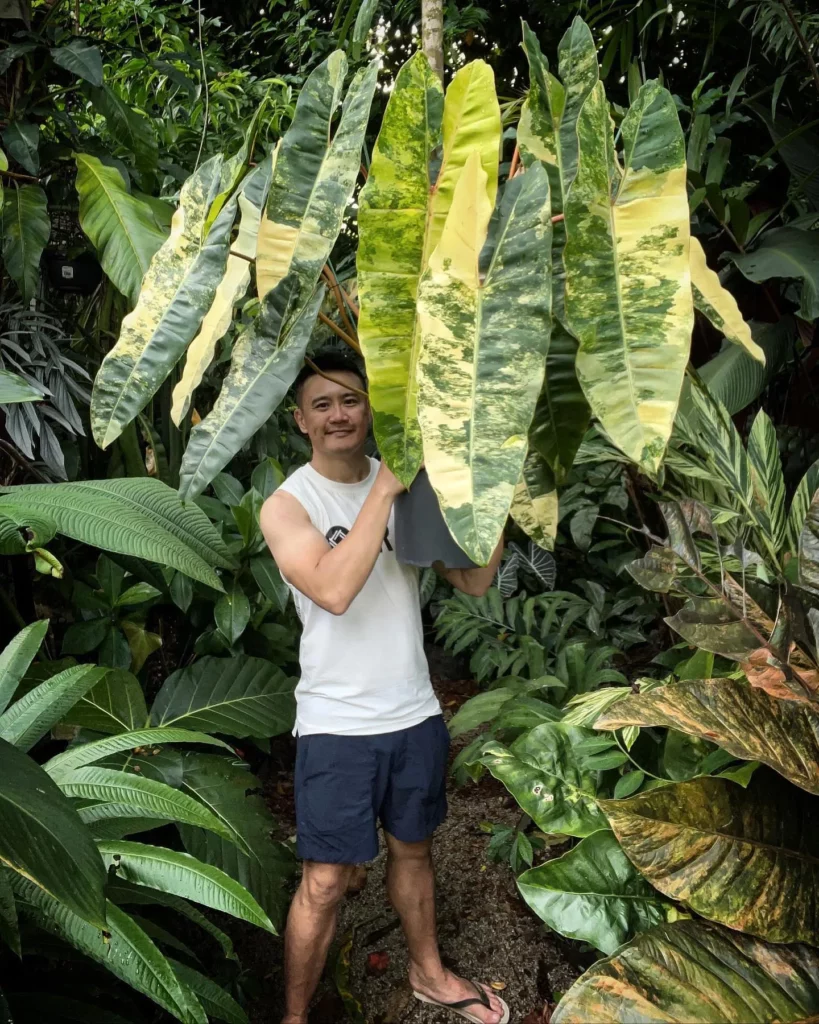

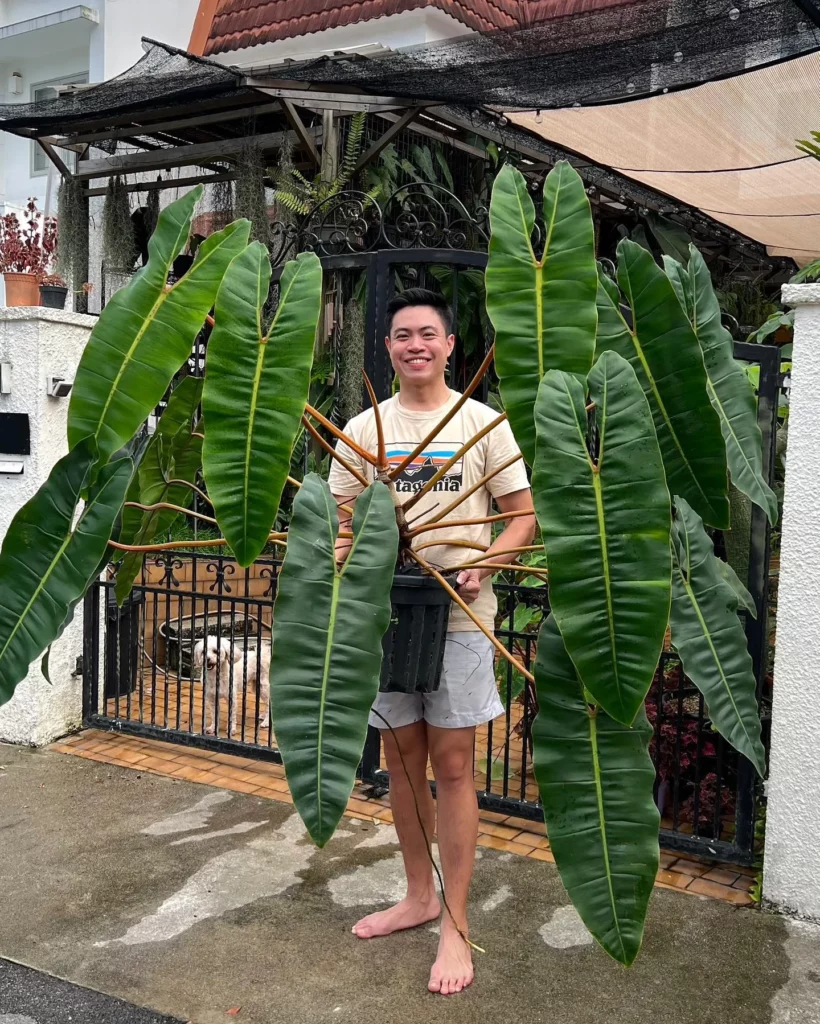
Philodendron billietiae is a tropical plant that can add a touch of exotic beauty to your space. To ensure its successful growth, there are a few essential care tips you should keep in mind.
1. Light: Provide your Philodendron billietiae with bright but indirect light. Direct sunlight can scorch its leaves, so it’s best to place the plant in an area with filtered light.
2. Temperature: Maintain temperatures between 65 and 80 degrees Fahrenheit during the day, with a minimum of 55 degrees at night. This tropical plant thrives in warm conditions, so avoid exposing it to extreme cold.
3. Humidity: High humidity is crucial for the growth of Philodendron billietiae. You can mist the plant frequently to increase humidity or create a tray with water and pebbles to create a moist environment around the plant.
4. Soil: Use well-draining soil that contains perlite, compost, sphagnum peat moss, and a sprinkle of soybean meal. This type of soil combination helps to retain moisture while allowing excess water to drain away.
5. Watering and Fertilizing: Water your Philodendron billietiae when the top inch of soil is dry. Avoid overwatering, as this can lead to root rot. Fertilize the plant monthly with a slow-release fertilizer that contains potassium, nitrogen, and phosphorus to support its growth.
6. Pruning: Regular pruning is necessary to remove dead leaves and maintain the desired shape of your Philodendron billietiae. This helps to keep the plant healthy and promotes new growth.
Philodendron Billietiae Propagation Tips: Expand Your Collection
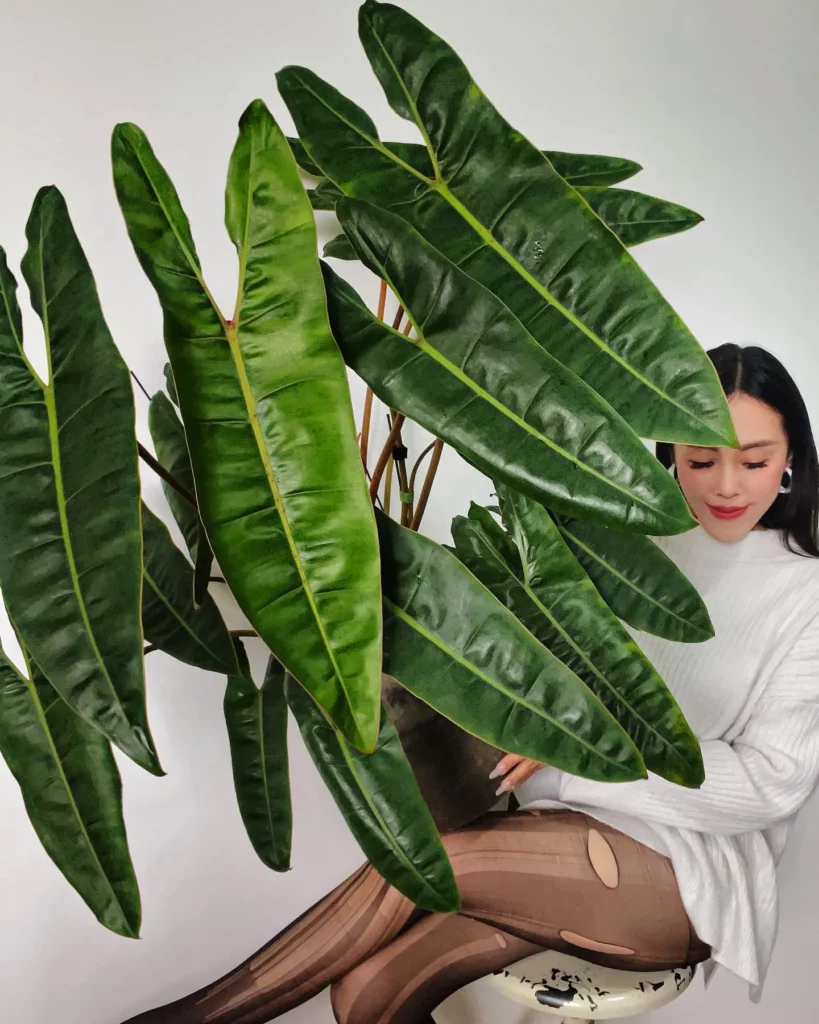


To expand your collection of Philodendron billietiae, you can propagate this stunning plant through stem cuttings or air layering. Propagation is an exciting way to create new plants and share the beauty of Philodendron billietiae with others. Here are some essential tips to help you successfully propagate this unique tropical plant.
Stem Cuttings
Stem cuttings are a popular method for propagating Philodendron billietiae. Start by selecting a mature stem with at least three nodes. Nodes are the points where leaves and roots emerge. Carefully remove the lower leaves, leaving only a few at the top. Dip the cut end of the stem in rooting hormone powder to encourage root development. Plant the cutting in moist potting soil, ensuring that only the node where the leaves were removed is buried. Keep the cutting warm and moist, either by enclosing it in a transparent plastic bag or using a propagation tray with a humidity dome. Within a few weeks, you should start to see roots forming. Once the roots are established, you can transplant the new plant into a larger pot.
Air Layering
Air layering is another effective method for propagating Philodendron billietiae. This technique involves creating a new plantlet while the stem is still attached to the parent plant. To air layer, select a section of stem and remove the leaves from the middle portion. Wrap this part of the stem with damp sphagnum moss, ensuring that it is securely covered. To maintain moisture, enclose the moss-wrapped stem with plastic wrap or foil. Keep the moss moist by misting it regularly. Over time, roots will start to develop within the moss. Once the roots are well-established, carefully cut the stem below the moss and plant the new plantlet in a pot filled with well-draining soil.
Philodendron Billietiae Quick Care Overview: Keep Your Plant Thriving
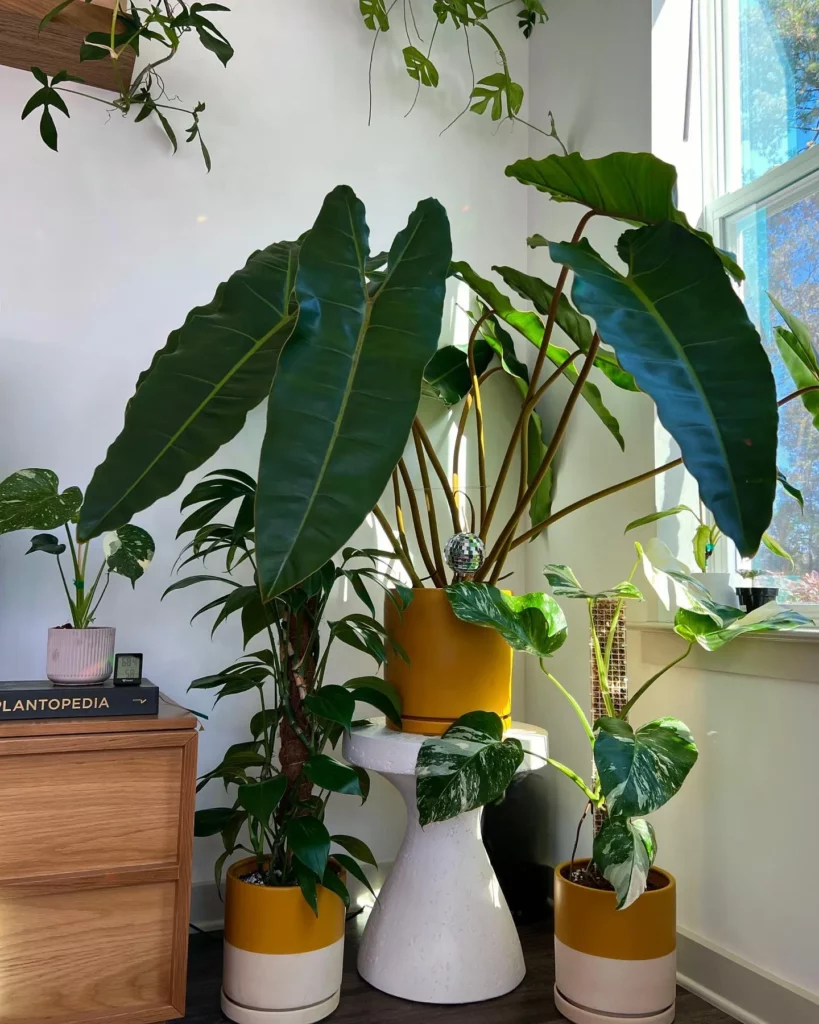


Proper care is essential for the health and vitality of your Philodendron billietiae. By providing the right environment and following these quick care tips, you can ensure your plant thrives and adds beauty to your space.
Light and Temperature
Place your Philodendron billietiae in a spot that receives bright but indirect light. Avoid direct sunlight, as it can scorch the leaves. Maintaining temperatures between 65 and 85 degrees Fahrenheit is ideal for this tropical plant. Keep in mind that temperatures below 55 degrees can harm the plant, so protect it from cold drafts.
Humidity and Watering
High humidity is crucial for the growth of Philodendron billietiae. Increase the humidity by misting the leaves regularly or placing the plant on a tray filled with water and pebbles. It’s important to keep the soil evenly moist, but not waterlogged. Water the plant when the top few inches of soil feel dry to the touch.
Fertilizing and Pruning
Feed your Philodendron billietiae with a balanced fertilizer monthly during the spring and summer. This will provide essential nutrients for healthy growth. Regular pruning is necessary to remove dead or yellowing leaves and shape the plant. Prune back any leggy stems to encourage bushier growth.
Pest and Disease Prevention
Keep an eye out for common pests like spider mites and mealybugs. Regularly inspect the leaves for any signs of infestation and take appropriate measures to control them. Additionally, avoid overwatering to prevent root rot, and ensure proper air circulation around the plant to discourage fungal diseases.
Philodendron Billietiae Moss Poles
Moss poles mimic the natural environment of Philodendrons in the wild, where they climb trees and larger plants to reach for sunlight. The moss pole provides a surface for the aerial roots of the Philodendron Billietiae to attach to, promoting stronger growth and larger leaves.
The moss also retains moisture, creating a humid microenvironment that benefits the plant, especially in drier indoor conditions.
Benefits of a Moss Pole for Philodendron Billietiae
No products found.
- Support for Upward Growth: Moss poles are designed to provide sturdy vertical support, encouraging your plants to grow upwards. The natural coir material has excellent water absorption, maintaining essential moisture and nutrients. This feature prevents aerial roots from drying out, ensuring your plants grow vigorously and healthily towards the light, mimicking their natural environment.
- Premium, Eco-Friendly Material: Moss poles are safe for both your plants and the environment. They are free from additives, wear-resistant, and reusable. The outer layer is tightly wrapped in jute rope, enhancing durability and longevity. The natural appearance of these poles allows them to blend seamlessly with your plants, adding to your decor’s aesthetic.
- Wide Application: The gentle coconut fiber material offers excellent grip for aerial roots, making these poles ideal for a range of climbing plants, from indoor houseplants to outdoor creepers. They’re especially suitable for varieties like ivy, vanilla, and small leaf vines.
For plant enthusiasts interested in a DIY approach, creating a moss pole is both cost-effective and rewarding. You can easily make one using a sturdy stick or PVC pipe as the core, and wrap it with sphagnum moss, securing the moss with fishing line or non-toxic glue. Keep the moss moist to encourage the Philodendron’s aerial roots to grip onto the pole. This DIY solution not only supports the natural climbing habit of the Philodendron Billietiae but also adds an aesthetic, green touch to your indoor garden.



